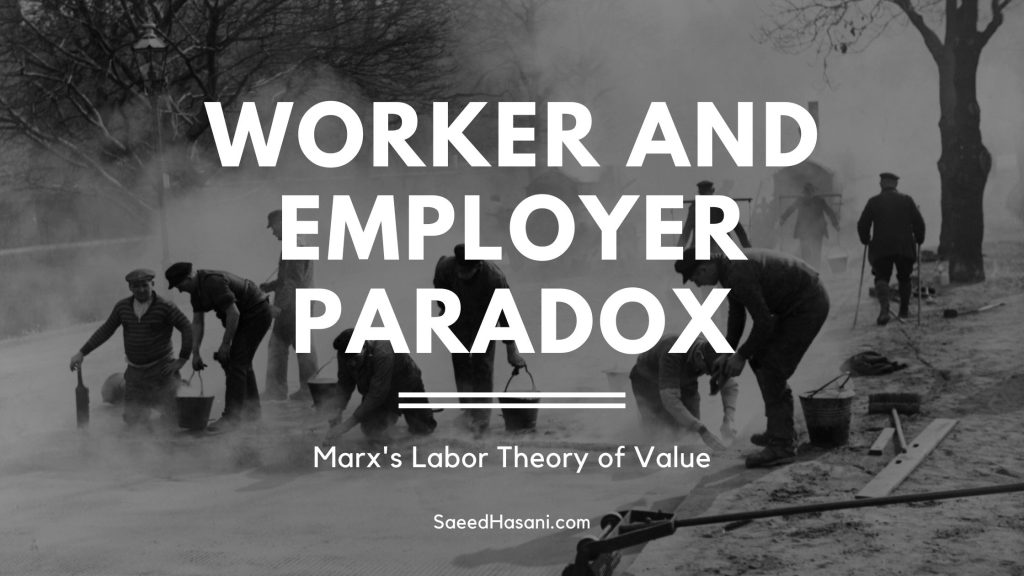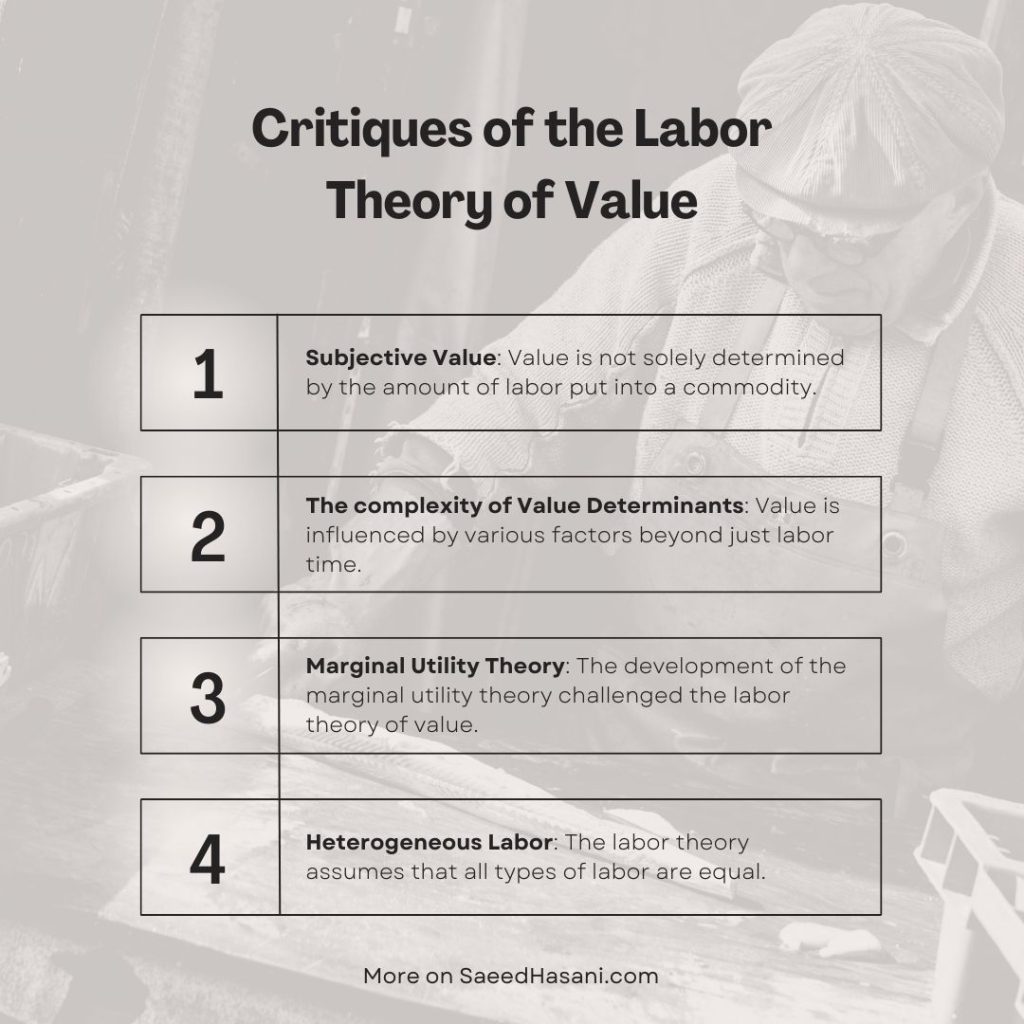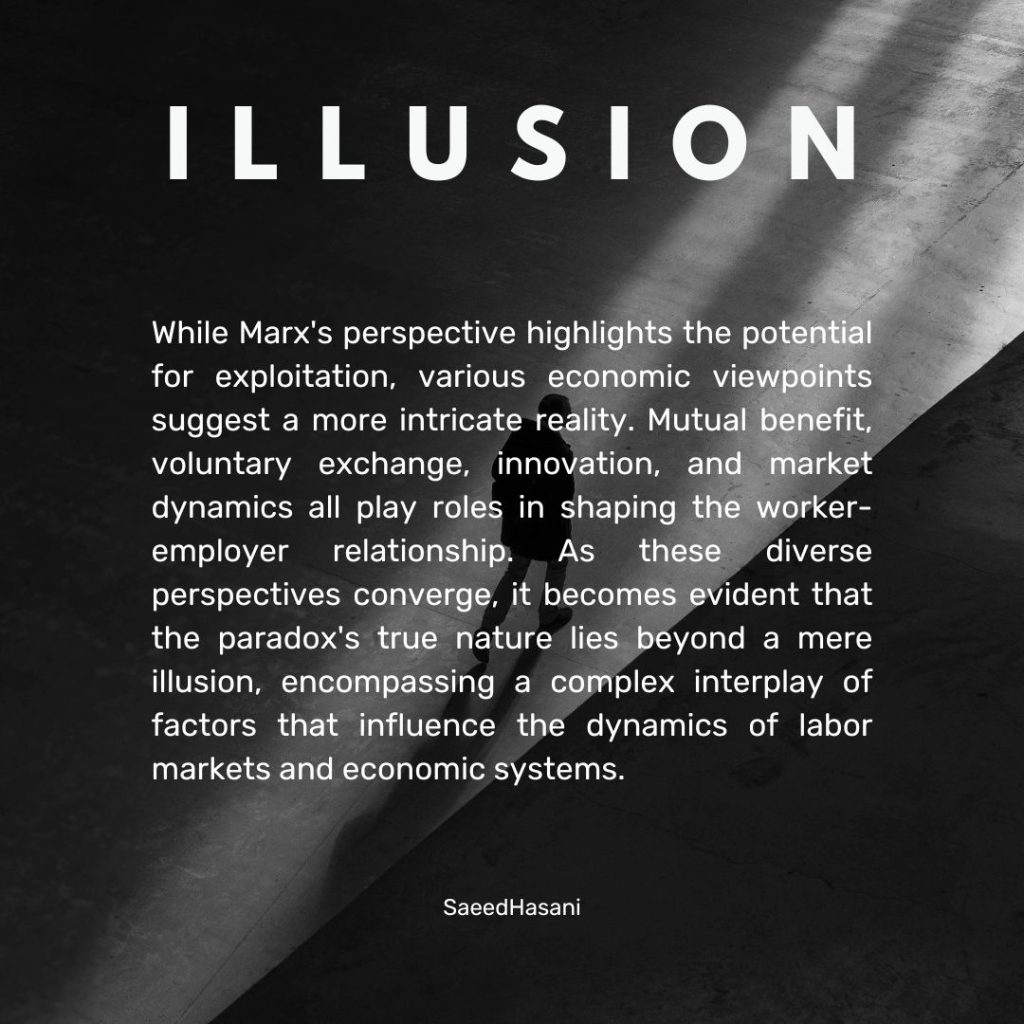Worker and Employer Paradox | Marx’s Labor Theory of Value

Karl Marx, a prominent philosopher, economist, and social theorist, analyzed the worker-employer relationship in his works, particularly in his seminal work, “Capital: Critique of Political Economy.” Marx’s analysis focuses on the capitalist mode of production and the exploitative nature of the relationship between workers and employers within this system. In this blog post, we dive into the Worker and Employer Paradox and explore how Marx’s Labor Theory of Value leads to worker and employer conflicts. Here are some key concepts Marx explored:
- Capitalist Mode of Production: Marx argued that capitalism is characterized by the private ownership of the means of production (such as factories, machinery, and raw materials) by a capitalist class. The workers, who do not own the means of production, are forced to sell their labor power to capitalists in exchange for wages.
- Exploitation: Marx contended that capitalists exploit workers through the extraction of surplus value. He asserted that the value of a worker’s labor power, which is the amount of labor required to reproduce their basic needs, is less than the value they produce during their working hours. The surplus value is appropriated by the capitalist as profit, leading to the accumulation of capital.
- Alienation: Marx argued that under capitalism, workers are alienated from the products of their labor and the process of production. The capitalist controls and directs the labor process, reducing the worker to a mere instrument of production. This alienation results in a sense of powerlessness, detachment, and a lack of fulfillment for the workers.
- Class Struggle: Marx believed that the inherent contradictions of capitalism would lead to the class struggle between the bourgeoisie (capitalist class) and the proletariat (working class). He argued that the exploitation and alienation experienced by the workers would ultimately provoke them to rise against the capitalist class and establish a more equitable social order.
Marx’s analysis of the worker-employer relationship provides a critique of the capitalist system, highlighting the exploitation and alienation experienced by workers. He advocated for a socialist revolution that would lead to the establishment of a classless society, where the means of production are collectively owned, and the worker-employer relationship is fundamentally transformed. It’s important to note that the practical implementation and interpretations of Marx’s ideas have varied throughout history and in different contexts.
Marx’s Labor Theory of Value: What is it? And Why it’s rung?
Marx’s Labor Theory of Value is a key concept in his analysis of capitalism, particularly in his critique of the exploitation inherent in the capitalist system. This theory attempts to explain the source of value in commodities and how economic exchange functions within a capitalist society. Here’s a breakdown of the theory and some of the criticisms it has faced:
Labor Theory of Value:
Marx’s Labor Theory of Value posits that the value of a commodity is determined by the amount of socially necessary labor time required to produce it. In other words, the value of a commodity is a result of the labor that goes into producing it. Marx argued that the value of a commodity is determined by the average amount of time it takes to produce that commodity under normal conditions within a given society. He further distinguished between two types of value:
- Use Value: This refers to the inherent utility or usefulness of a commodity. It’s the reason why people want to consume or use the commodity.
- Exchange Value: This is the value of a commodity in terms of its ability to be exchanged for other commodities in the market. Exchange value is determined by the socially necessary labor time required to produce the commodity.
Critiques of the Labor Theory of Value:
- Subjective Value: Critics argue that value is not solely determined by the amount of labor put into a commodity but also by the subjective preferences and utility that individuals assign to it. The Austrian School of Economics, for example, emphasizes that individuals’ perceptions and preferences play a significant role in determining value.
- The complexity of Value Determinants: Critics contend that value is influenced by various factors beyond just labor time, including scarcity, demand, supply, and technological advancements. These factors can lead to variations in value that the labor theory does not fully account for.
- Marginal Utility Theory: The development of the marginal utility theory challenged the labor theory of value. Marginal utility theory posits that the value of a commodity is determined by the marginal satisfaction or utility it provides to individuals. This theory focuses on consumer preferences and market dynamics rather than production labor.
- Heterogeneous Labor: The labor theory assumes that all types of labor are equal, which critics argue oversimplifies the complexities of different types of work. Skilled, specialized, or creative labor might not be directly proportional to the amount of time spent on it.
- Capital and Machinery: The theory doesn’t fully account for the role of capital investments and technological advancements, such as machinery, in the production process. These factors can increase productivity without necessarily requiring more labor time.
- Dynamic Markets: In rapidly changing markets and economies, the labor theory of value might not effectively explain shifts in prices and value due to changing consumer preferences and technological disruptions.
- Historical Context: Some critics argue that the theory might be more applicable to the historical context in which Marx developed it (19th-century Europe) than to contemporary global economies with diverse forms of production and exchange.
While Marx’s Labor Theory of Value was a foundational element of his critique of capitalism; it has faced significant criticism for oversimplifying the determinants of value and not fully capturing the complexity of market dynamics and individual preferences in modern economies.

How the Labor Theory of Value leads to the Worker and employer paradox in Marx’s viewpoint?
In Marx’s viewpoint, the Labor Theory of Value plays a significant role in highlighting what he refers to as the “worker and employer paradox,” which is central to his critique of capitalism. This paradox revolves around the concept of surplus value and the inherent contradiction between the interests of workers and employers within a capitalist system.
The Labor Theory of Value states that the value of a commodity is determined by the amount of socially necessary labor time required to produce it. This means that the value added to a commodity through labor is the source of its worth in exchange. However, in a capitalist system, workers are paid a wage that corresponds to the value of the labor they contribute to production. The capitalist employer, on the other hand, sells the produced commodities in the market for their exchange value, which can be higher than the total wages paid to workers.
Here’s how this leads to the worker and employer paradox:
- Surplus Value: According to Marx, the value of a commodity is determined by the labor put into it, but the capitalist extracts surplus value by paying workers less than the full value of their labor. The difference between the value created by the worker’s labor and the wage they receive is the surplus value, also referred to as profit.
- Exploitation: Marx argues that this process leads to the exploitation of the working class by the capitalist class. Workers are paid less than the value they produce, and this surplus value is appropriated by the capitalist as profit. The capitalist benefits from the labor of the workers without providing them with an equivalent value in return.
- The contradiction of Interests: This creates a contradiction of interests between workers and employers. Workers aim to maximize their wages and improve their working conditions, while capitalists seek to maximize their profits. This inherent conflict between the two classes forms the basis for Marx’s analysis of class struggle and the eventual breakdown of capitalism.
- Alienation: The exploitation of labor and the focus on profit-making can lead to a sense of alienation among workers, as they may feel disconnected from the products of their labor and the overall production process. This alienation contributes to the wider social tensions within capitalist societies.
The Labor Theory of Value, combined with Marx’s analysis of exploitation and surplus value, highlights the paradoxical relationship between workers and employers in a capitalist system. The workers produce value, but they do not receive the full value of their labor, leading to class conflict and social tensions that Marx believed would ultimately drive the transition to a new socioeconomic order.

Is the worker and employer paradox an illusion?
The Worker and Employer paradox, as presented in Marx’s theory, can be seen as a complex concept that has been subject to debate and interpretation. Some economic perspectives argue that the paradox might not be as straightforward as Marx depicted it. Here are a few points that shed light on why some consider the Worker and Employer paradox to be more nuanced or even an illusion:
- Mutual Benefit: Critics argue that the relationship between workers and employers is not purely exploitative. While it’s true that employers seek profit, they also invest in capital, take risks, and provide the resources needed for production. In return, workers receive wages that provide for their livelihoods. Both parties benefit from this exchange in different ways.
- Voluntary Exchange: In a capitalist system, employment is typically based on voluntary exchange. Workers choose to work for employers based on the terms and conditions offered. This suggests that workers perceive their wages and working conditions to be acceptable within the context of their available alternatives.
- Innovation and Investment: Employers often invest in technology, machinery, and processes that can enhance productivity and increase the value of the products being produced. This investment contributes to economic growth and job creation. Workers also benefit from increased productivity through potential wage growth and job security.
- Wage Negotiations: In many modern economies, labor unions, and collective bargaining play a role in wage negotiations and working conditions. This allows workers to have a voice in determining their terms of employment and can help mitigate some of the potential exploitation.
- Labor Mobility: The existence of labor mobility enables workers to seek better opportunities and higher wages if they feel their current employment situation is not satisfactory. This competition among employers for skilled labor can influence wages and working conditions.
- Market Dynamics: The price of labor (wages) is influenced by supply and demand in the labor market, just like the price of any other commodity. This market-driven process can lead to an equilibrium where wages align with the value of labor.
- Complex Value Creation: Critics contend that the value of a commodity is not solely determined by labor but also by factors like innovation, entrepreneurship, and the coordination of resources. These factors contribute to value creation beyond simple labor input.
- Long-Term Growth: Some economists argue that capitalism’s ability to generate wealth and stimulate economic growth benefits society as a whole. Over time, as economies grow, workers’ living standards can improve, leading to a reduction in inequality.
While Marx’s Worker and Employer paradox is a central element of his critique of capitalism, alternative viewpoints suggest that the relationship between workers and employers is more complex than straightforward exploitation. These perspectives emphasize the mutual benefits, market dynamics, and the role of innovation and investment in shaping the dynamics of labor markets and economic systems.
Conclusion
In conclusion, the concept of the Worker and Employer paradox, as discussed within Marx’s framework, is a pivotal element of his critique of capitalism. Marx’s analysis centers on the exploitation of labor and the inherent conflicts between the interests of workers and employers. This paradox is rooted in the Labor Theory of Value, where the value produced by workers’ labor often exceeds the wages they receive, leading to the appropriation of surplus value by capitalists.
However, it’s important to recognize that this paradox has been subject to varying interpretations and critiques. Some perspectives suggest that the relationship between workers and employers is more nuanced than a mere dichotomy of exploitation. Factors like voluntary exchange, mutual benefit, innovation, and market dynamics come into play, challenging the straightforward portrayal of the paradox.
While Marx’s insights into the worker-employer relationship have influenced discussions on inequality, class struggle, and capitalism’s impact on society, alternative viewpoints emphasize the multifaceted nature of this relationship. As economies evolve and societies adapt, the complexity of labor dynamics becomes more evident, inviting a broader understanding that goes beyond the boundaries of the Worker and Employer paradox as initially presented by Marx.







Responses